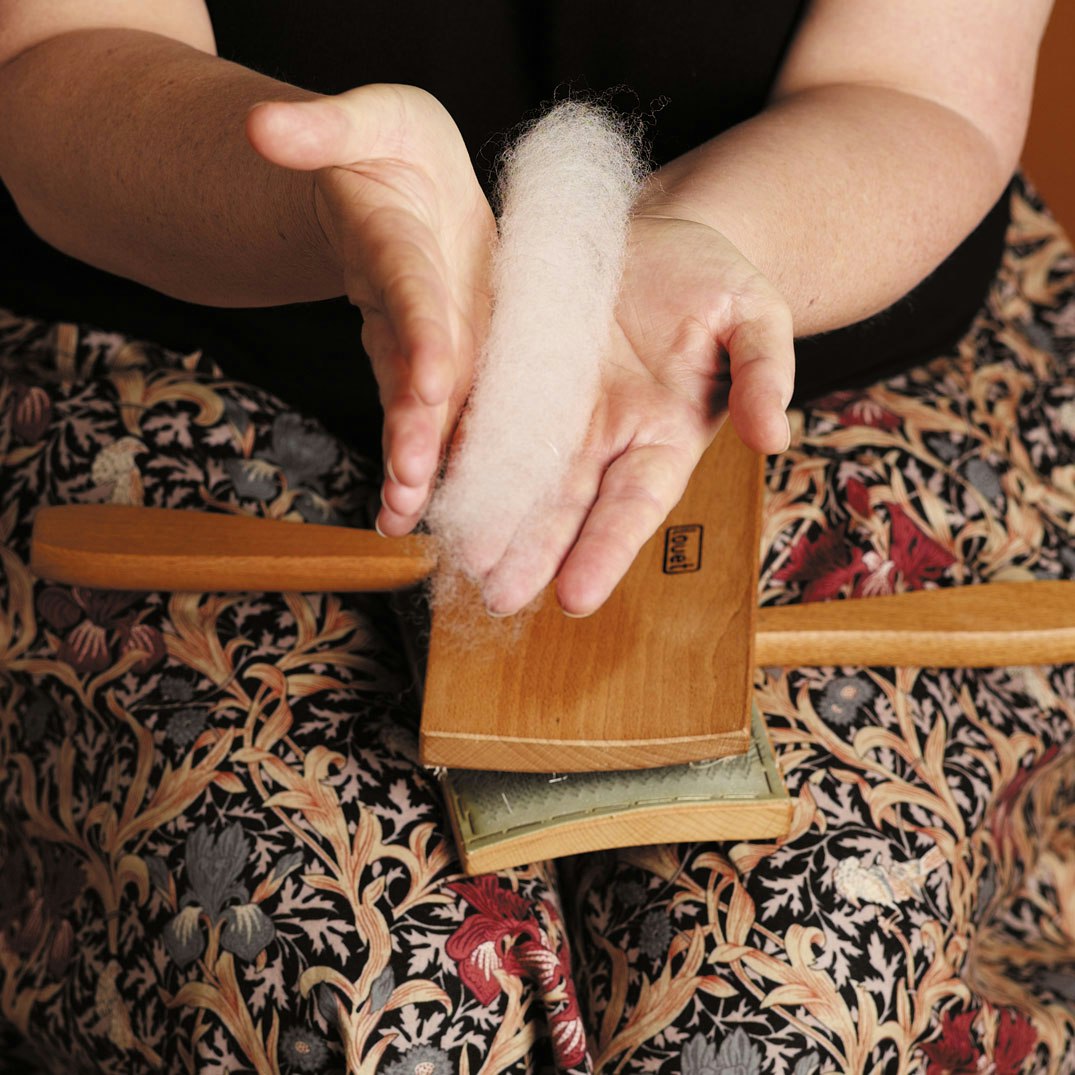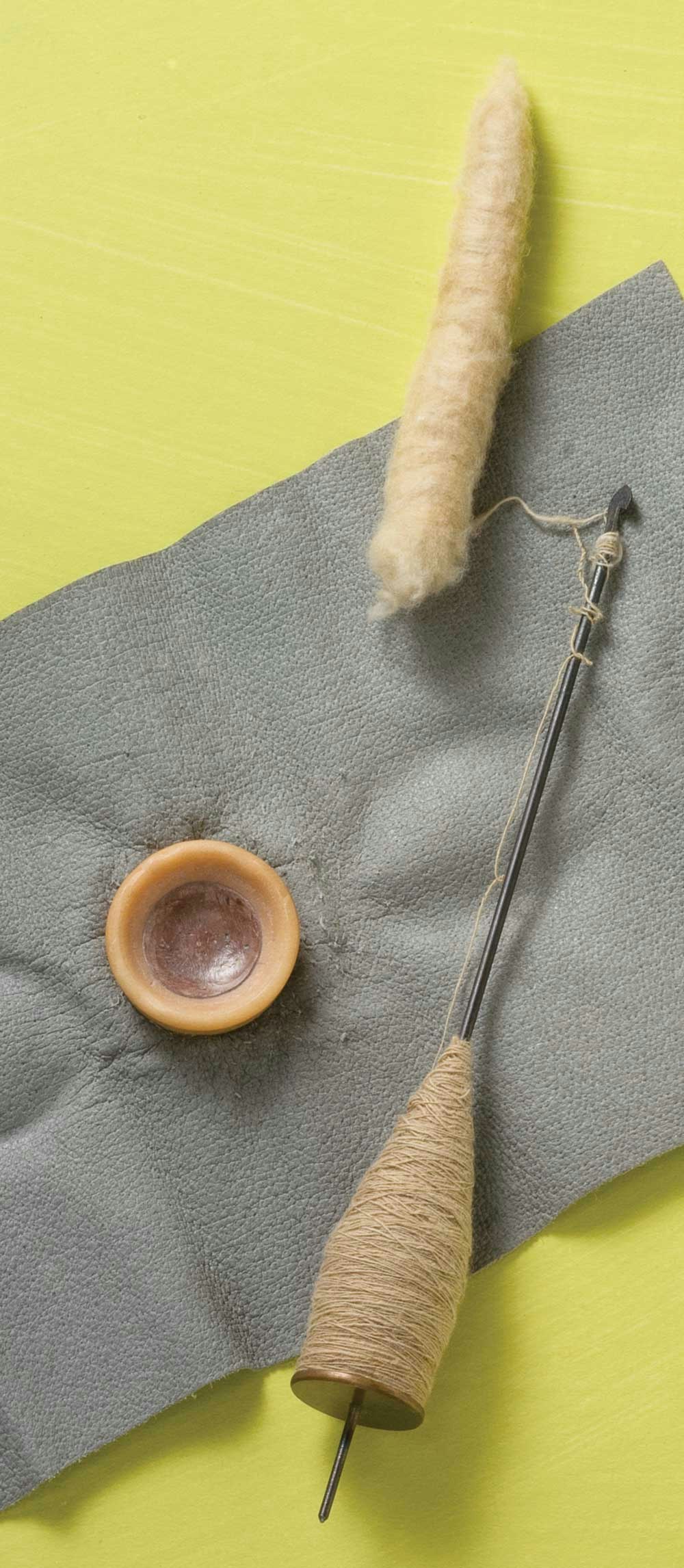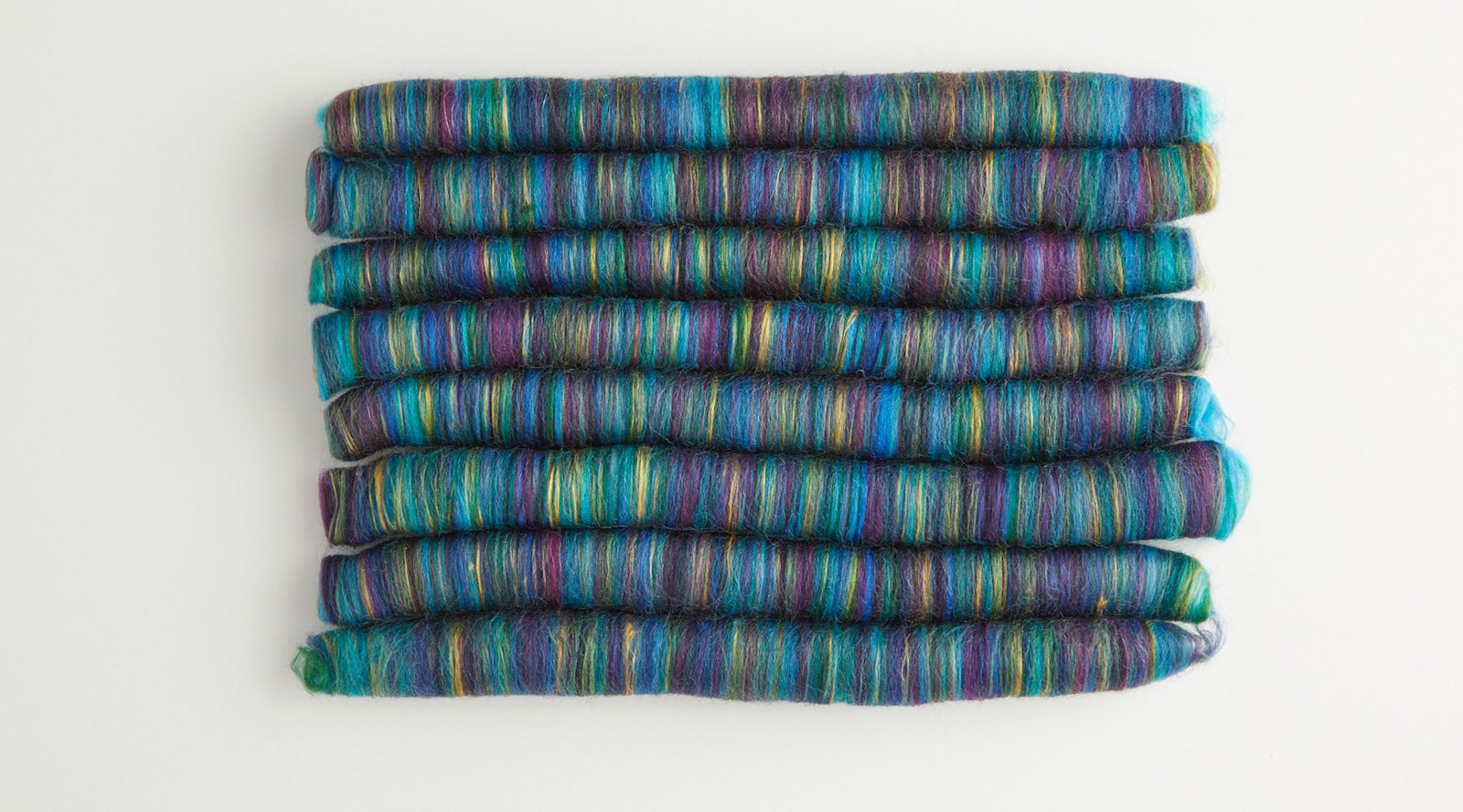Spinning is full of words that non-spinners may have difficulty getting their tongues around. Who but a spinner sees the word “sliver” and thinks it rhymes with “fiver”? (And that’s before we get to roo and swarf.)
A few years ago, when I began seeing more hand-dyed fiber for sale, it was typically labeled “hand-dyed roving”—even though the fiber preparation on offer was definitely combed top, not carded roving. Before long, savvy sellers began labeling their fiber with both terms, as “top roving.”
Along the same lines, when I see lovely carded fiber rolls for sale these days, they’re often called “rolag punis.” But “rolag puni” is a bit like “tortilla pita”—two items with some similar traits, but definitely not interchangeable. So what gives?
What's a Rolag?
“Rolag” is derived from Gaelic languages and means something like “little roll.” Traditionally made on handcards, a classic rolag is made from wool opened and carded into a lofty, fluffy preparation.

In her article in Spin Off Fall 2001, “Handcarding with a Light Touch,” Carol Rhoades describes how she makes “the perfect rolag.” Photo by Joe Coca
When I close my eyes and think of rolags, I imagine myself sitting in front of a spinning wheel with a basket of lofty wool bundles by my side, just waiting for me to spin them in a relaxed long draw.
What's a Puni?
The etymology of “puni” is a bit harder to find. It seems to be derived from a Hindi word, which makes sense because the classic puni is a cotton preparation commonly spun in India. It’s very common to find tightly wound carded cotton punis for sale, ready to spin with a charkha or takli. Punis are traditionally made with short fibers.

A puni of natural colored cotton is the perfect fiber preparation for a speedy takli spindle. Photo by Joe Coca
Punis are generally wound around a core such as a thin dowel or pair of dowels, which allows the fibers to be prepared into a tighter roll.
So What’s a Rolag-Puni?
Many spinners and fiber producers are exploring the combination of rolag and puni preparations with fun textures and swoon-worthy colors that are as tempting as candy. “Rolag-punis” often blend fibers such as wool, silk, and firestar. When the fibers are wound around a pair of dowels after blending, the color and texture pop on the smooth surface of the roll, unlike a fluffy rolag. However, the longer staple-length of these fibers would not work well if wound as tightly as a traditional cotton puni. So, rolag-punis are neither tightly compacted nor cloud-like and fluffy. And they're generally bigger than traditional rolags or punis.
Blending boards (which have exploded in popularity over the last few years) are the perfect canvas for making these layered and multicolored little rolls, and an adroit drumcarder-user can pull a set of matching rolag-punis off the big drum.
How Do I Spin Them?
In any of these preparations, the fibers present to the drafting triangle with some degree of perpendicular or crossways aspect, so you’ll want some amount of twist between your hands. Classic rolags and punis are most often spun with a long-draw (woolen draw) with the point of twist between the hands. A fat, sparkly rolag could have enough structure and fibers long enough to attenuate with some consistency with a short-draw (worsted draw) method. What method works best is often determined by the length of the fibers and how tightly they are rolled. Try it several ways and see what is most comfortable.
So pick up a handful of fiber cigars and spin happy!
Anne Merrow is a cofounder of Long Thread Media.
Originally published October 14, 2019; updated February 10, 2023.

